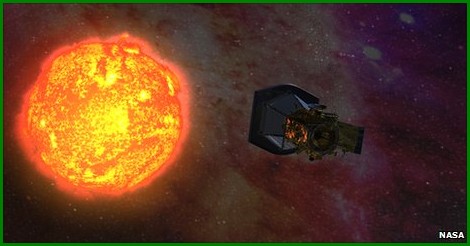Solar Probe Plus will set the nature of solar storms NASA Solar Probe Plus project for the first time in the history of science will deepen into the outer atmosphere of the Sun in the literal sense - after many years of traveling the space probe must be placed as close to the surface of the sun, as far as it will allow.
NASA Solar Probe Plus project for the first time in the history of science will deepen into the outer atmosphere of the Sun in the literal sense - after many years of traveling the space probe must be placed as close to the surface of the sun, as far as it will allow.
Start the mission is scheduled for 2018. The project may be one of the most expensive in the history of NASA: a tentative cost of about $ 750 million. One of the challenges that will face the probe to find out the cause of solar storms and the nature of the plasma emission, which have a negative impact on the Earth's electromagnetic field.
The mission also has a global problem: for many decades science interests temperature anomaly on the sun. The fact that the average temperature of the solar corona - about a million degrees Kelvin.
A similar - and in the solar interior. However, between the crown and the subsoil is still photosphere - part of the atmosphere, and forms the visible surface of the Sun for us. So, the temperature in the photosphere - about 5000 degrees Kelvin.
Now science can not explain exactly how the star may be a drop in temperature.
From the Solar Probe Plus otgadki not expect all of these questions - the scientists hope that the mission will give some clues though that would help to better understand the Sun, and possibly predict its behavior.
While the project is more like science fiction: only one flight to the sun would go according to plan, for about 8 years. How much of the probe will be able to work out in ultra-high temperatures and at all if he can come close to a single star solar system - to protect themselves from the negative answer to these questions, a team of Solar Probe Plus is constantly improving design of the probe, given the experience of the previous long-range missions.
By the middle of the 20 - years - if all goes as planned - scientists may finally have a more or less complete picture of the interesting objects in the solar system.
in the wake of press.ua
Universe, the. History Channel
A look at the planet Mars, the planet most similar to Earth in our solar system; an examination of Olympus Mons the largest volcano in the solar system; how NASA probes search for evidence of past life on the red planet, and what that life might have looked like.